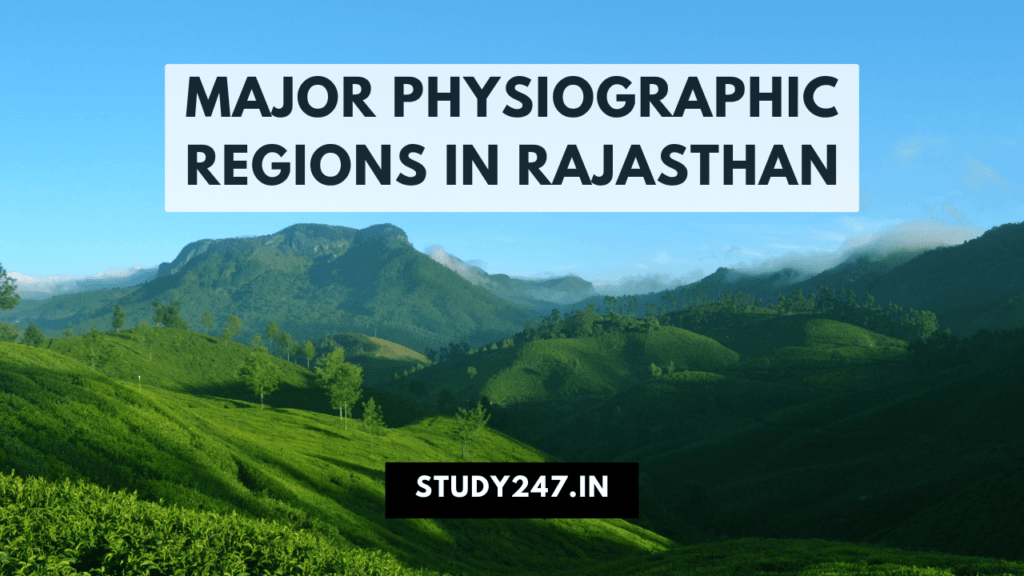Geography of Rajasthan: Major physiographic regions and their characteristics. The Rajasthan State, earlier known as Rajputana came into existence on March 30, 1949. It occupies 3, 42,239 sq km area covering 10.74% of the Indian Territory and is the largest State of India.
Rajasthan, the largest state in India, is characterized by its diverse topography. It can be broadly divided into four major physiographic regions:
Major physiographic regions in Rajasthan

Broad Physical Features:
i. Mountains, Peaks, Aravalli Ranges
ii. Plateaus, Major Plateaus in Rajasthan
iii. Plains, Eastern, Banas, Chappan Plain
iv. River system of Rajasthan
Rivers that drain in the Bay of Bengal: Chambal River, Parwati- Kalisindh-Chambal link, Banas River, Banas River Basin, Kali Sindh River, Parvati River, Berach River, Mez River, Vapani (Bahyani) River, Gambhiri River, and Banganga River
Rivers that drain into the Arabian Sea: Luni River, Mahi River, and Sabarmati River
Inland Rivers: Inland River/Drainage, Kantali River, Sota Sabi River, Kakani or Kakneya River, and Ghaghar River
Other Rivers: Khari River, Dai River, Dheel River, Morel River, Kalisil River, Sarasvati and Drishadvati: Ancient Indian River
Also, check: Rajasthan General Studies | General Knowledge of Rajasthan
(v) Lakes in Rajasthan
Salt Water Lakes: Sambhar Lake, Didwana, Pachpadra, and Lunkaransar Lake
Fresh (Sweet) Water Lake: Jaisamand, Rajsamand, Pichhola, Fateh Sagar, Anasagar, Pushkar Lake, and Siliserh Lake, NLCP in Rajasthan
(vi) Thar Desert
Also, check: RPSC RAS Prelims and Mains 2024 Preparation
